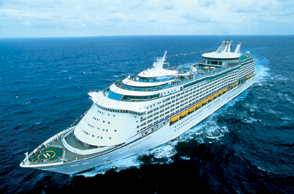Why doesn't a ship sink and float on water
The ability of a ship to float on water, despite its weight, can be attributed to the principles of buoyancy and density, primarily described by Archimedes' principle. This principle states that an object submerged in a fluid experiences an upward force equal to the weight of the fluid it displaces. Essentially, for a ship to float, the upward buoyant force must equal the downward gravitational force acting on it.
When a ship is placed in water, it pushes aside a volume of water equal to its own weight. If the weight of the water displaced is greater than or equal to the weight of the ship, the ship will float. This is why ships are designed with hulls that are large and wide; a larger hull displaces more water, increasing buoyancy. The shape of the hull is crucial because it allows for a greater volume of water to be displaced without increasing the ship's weight significantly.
Density also plays a vital role in this phenomenon. Density is defined as mass per unit volume. While steel, for example, has a higher density than water and would sink if it were in a solid block form, a ship's hull is hollow. This hollow structure means that although the materials used to construct the ship (like steel) are dense, the overall density of the ship—considering both the material and the air inside—is less than that of water. When an object’s overall density is less than that of the fluid in which it is placed, it will float.
Moreover, ships are designed with various compartments that can be filled with air or water. This design feature enhances their buoyancy and stability. In case of an emergency where water enters these compartments, ships are equipped with pumps and other systems to manage flooding and maintain buoyancy.
Another important factor is stability. Ships are engineered with a low center of gravity and a wide base to prevent tipping over. The keel, which is the structural backbone of a ship, helps in maintaining stability by lowering the center of gravity and providing resistance against lateral forces.
In summary, a ship floats on water due to the principles of buoyancy and density. Its design allows it to displace enough water to counteract its weight, while its hollow structure ensures that its overall density remains less than that of water. These factors combined enable ships to navigate oceans and rivers safely, carrying cargo and passengers across vast distances without sinking.



No comments yet
Be the first to share your thoughts!